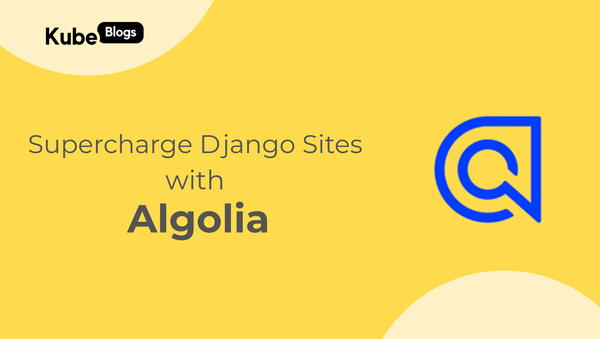Table of Contents
ArgoCD is a powerful tool for managing Kubernetes applications through GitOps principles, ensuring that your deployments are consistent and reliable.
Slack, on the other hand, is a widely-used communication platform that enhances team collaboration. By integrating Slack with ArgoCD, you can receive real-time notifications about your deployment statuses directly in your Slack channels.
This integration encourages transparency, quick response times, and improved coordination among team members.
How Argo CD Notifications Work
Argo CD Notifications is a helpful tool that keeps your team updated about important events in your Argo CD environment. Let’s break down how it works in simple terms:
- Argo CD Server: This is the main control center of Argo CD. It manages your applications and makes sure their deployments run smoothly. Think of it as the brain that keeps everything in check.
- Notifications Controller: This part is like the lookout. It watches for any events or changes happening in your Argo CD applications. If it spots an important update, it takes action to trigger a notification.
- Event Listener (Webhook, etc.): This could be a webhook or another kind of listener. Its job is to capture specific events from the Argo CD API, like when an application gets updated or when a deployment status changes. It’s like the messenger that carries the news.
- Slack Notifications Service: This is the part that makes sure your team hears the news. Once the event listener picks up an event, the notifications service steps in. It formats the event data and sends it to your team’s Slack channel, so everyone is in the loop.
- Slack Channel (Notifications): Finally, this is where the magic happens. The event data gets posted in a Slack channel that your team uses. It’s like a virtual alert board that shows real-time updates, so your team can react quickly.
How It All Comes Together
Imagine you have a big project and Argo CD is managing the deployments. One day, someone pushes an important update to the code. Here’s what happens next:
- The Argo CD Server picks up the change and manages the update process.
- The Notifications Controller notices this and triggers an alert.
- The Event Listener catches this alert and sends the details to the Slack Notifications Service.
- The Slack service formats the information and posts it to your designated Slack channel.
- Your team sees the update in Slack and can jump in if needed.
With Argo CD Notifications, your team stays informed about deployments, syncs, and any changes—keeping everyone aligned and proactive.

Prerequisites
Before diving into the setup, ensure you have the following:
- Access to a Slack Workspace: You need permissions to create apps and manage channels.
- ArgoCD Installed via Helm: This guide assumes you've installed ArgoCD using Helm.
- GitHub Repository: A repository where you can push your configuration files.
- kubectl Installed: Command-line tool for interacting with Kubernetes clusters.
- Basic Knowledge of Kubernetes and ArgoCD: Familiarity with deploying applications and managing configurations.
Step 1: Setting Up Slack for Notifications
To receive notifications from ArgoCD in Slack, you need to create a Slack app and obtain a Webhook URL.
1.1. Create a Slack App and Obtain a Webhook URL
- Access Slack API:
- Navigate to the Slack API website.
- Sign in to your Slack workspace.
- Create a New Slack App:
- Click on "Create an App".
- Choose "From scratch".
- Enter an App Name (e.g.,
ArgoCD Notifications) and select your Slack Workspace. - Click "Create App".
- Set Up Incoming Webhooks:
- In your app’s settings, go to "Incoming Webhooks".
- Toggle the "Activate Incoming Webhooks" switch to On.
- Click "Add New Webhook to Workspace".
- Select the channel where you want to receive notifications (e.g.,
#deployments) and authorize the app. - Copy the Webhook URL provided. This URL is crucial for sending messages to your Slack channel.
Security Tip: Keep your Webhook URL confidential. Treat it like a password, as anyone with this URL can post messages to your Slack channel.
Step 2: Installing ArgoCD Using Helm
Assuming you haven't installed ArgoCD yet, follow these steps to install it using Helm. If ArgoCD is already installed, you can skip this.
2.1. Add the ArgoCD Helm Repository
helm repo add argo https://argoproj.github.io/argo-helm helm repo update
2.2. Install ArgoCD
helm install argocd argo/argo-cd --namespace argocd --create-namespace2.3. Verify Installation
Ensure that all ArgoCD components are running:
kubectl get pods -n argocdYou should see pods like argocd-server, argocd-repo-server, argocd-application-controller, argocd-notification-controller etc., in the Running state.

Step 3: Configuring ArgoCD with Provided YAML Files
With ArgoCD installed and Slack set up, the next step is to configure ArgoCD to send notifications to Slack using the provided YAML configuration files: application.yml, secret.yml, and configmap.yaml.
3.1. Secret Configuration (secret.yml)
This file securely stores the Slack Webhook URL. It's essential to keep sensitive information like Webhook URLs in Kubernetes Secrets.
# secret.yml
apiVersion: v1
kind: Secret
metadata:
name: argocd-notifications-secret
namespace: argocd
stringData:
slack-token: "xoxb-xxxxxxxxxxxxxxxxx-NqIzkHDWzW5YLtCgh1rAnSuc"Explanation:
- slack-token: Replace
"xoxb-xxxxxxxxxxxxxxxxx-NqIzkHDWzW5YLtCgh1rAnSuc"with your actual Slack Webhook URL obtained in Step 1.
3.2. ConfigMap Configuration (configmap.yaml)
This file defines the notification templates and triggers for Slack.
# configmap.yaml
apiVersion: v1
kind: ConfigMap
metadata:
name: argocd-notifications-cm
namespace: argocd
data:
context: |
argocdUrl: http://localhost:8082
service.slack: |
token: $slack-token
# Notification template when an application update starts
template.app-update-started: |
email:
subject: Application {{.app.metadata.name}} update has started.
message: |
{{if eq .serviceType "slack"}}:rocket:{{end}} Application *{{.app.metadata.name}}* update has started at {{.app.status.operationState.startedAt}}.
Check the details at: {{.context.argocdUrl}}/applications/{{.app.metadata.name}}.
slack:
attachments: |
[{
"title": "{{ .app.metadata.name}}",
"title_link": "{{.context.argocdUrl}}/applications/{{.app.metadata.name}}",
"color": "#0DADEA",
"fields": [
{
"title": "Update Status",
"value": "In Progress",
"short": true
},
{
"title": "Started At",
"value": "{{.app.status.operationState.startedAt}}",
"short": true
}
]
}]
# Notification template when an application update succeeds
template.app-update-succeeded: |
email:
subject: Application {{.app.metadata.name}} update has succeeded.
message: |
{{if eq .serviceType "slack"}}:white_check_mark:{{end}} Application *{{.app.metadata.name}}* has been successfully updated at {{.app.status.operationState.finishedAt}}.
Check the details at: {{.context.argocdUrl}}/applications/{{.app.metadata.name}}.
slack:
attachments: |
[{
"title": "{{ .app.metadata.name}}",
"title_link": "{{.context.argocdUrl}}/applications/{{.app.metadata.name}}",
"color": "#18be52",
"fields": [
{
"title": "Sync Status",
"value": "{{.app.status.sync.status}}",
"short": true
},
{
"title": "Finished At",
"value": "{{.app.status.operationState.finishedAt}}",
"short": true
}
]
}]
# Notification template when an application update fails
template.app-update-failed: |
email:
subject: Application {{.app.metadata.name}} update has failed.
message: |
{{if eq .serviceType "slack"}}:exclamation:{{end}} Application *{{.app.metadata.name}}* update has failed at {{.app.status.operationState.finishedAt}} with error: {{.app.status.operationState.message}}.
Check the details at: {{.context.argocdUrl}}/applications/{{.app.metadata.name}}.
slack:
attachments: |
[{
"title": "{{ .app.metadata.name}}",
"title_link": "{{.context.argocdUrl}}/applications/{{.app.metadata.name}}",
"color": "#E96D76",
"fields": [
{
"title": "Sync Status",
"value": "Failed",
"short": true
},
{
"title": "Finished At",
"value": "{{.app.status.operationState.finishedAt}}",
"short": true
},
{
"title": "Error",
"value": "{{.app.status.operationState.message}}",
"short": true
}
]
}]
# Trigger when the application update starts
trigger.on-update-started: |
- description: Application update has started
send:
- app-update-started
when: app.status.operationState.phase in ['Running', 'InProgress']
# Trigger when the application update succeeds
trigger.on-update-succeeded: |
- description: Application update has succeeded
send:
- app-update-succeeded
when: app.status.operationState.phase in ['Succeeded'] and app.status.health.status == 'Healthy'
# Trigger when the application update fails
trigger.on-update-failed: |
- description: Application update has failed
send:
- app-update-failed
when: app.status.operationState.phase in ['Failed', 'Error', 'Unknown']
Explanation:
- context: Defines the ArgoCD URL. Update
argocdUrlif your ArgoCD dashboard is accessible at a different address. - service.slack: References the Slack token stored in the secret.
- Templates: Define how notifications are structured for different events (update started, succeeded, failed). Each template specifies the message content for both email and Slack.
- Triggers: Define when each notification should be sent based on the application's state.
3.3. Application Configuration (application.yml)
This file defines the ArgoCD application and includes annotations for Slack notifications.
# application.yml
apiVersion: argoproj.io/v1alpha1
kind: Application
metadata:
name: nginx
namespace: argocd
annotations:
# Existing notification annotations
notifications.argoproj.io/subscribe.on-sync-succeeded.slack: "gitops"
notifications.argoproj.io/subscribe.on-update-started.slack: "gitops"
notifications.argoproj.io/subscribe.on-update-failed.slack: "gitops"
finalizers:
- resources-finalizer.argocd.argoproj.io
spec:
project: default
source:
repoURL: https://github.com/kubenine/kubenine-argocd.git
targetRevision: HEAD
path: manifests
destination:
server: https://kubernetes.default.svc
syncPolicy:
automated:
prune: true
selfHeal: true
allowEmpty: false
syncOptions:
- Validate=true
- CreateNamespace=false
- PrunePropagationPolicy=foreground
- PruneLast=true
Explanation:
- Annotations: These lines subscribe the application to specific notification events (
on-sync-succeeded,on-update-started,on-update-failed) and direct them to the Slack channel namedgitops. - Spec: Defines the source repository, the path to the manifests, and the synchronization policy for automated deployments.
Step 4: Deploying Configurations to GitHub
To ensure ArgoCD manages these configurations, you need to push them to your GitHub repository.
4.1. Clone Your GitHub Repository (deployment.yaml, service.yaml)
git clone https://github.com/yourusername/your-repo.git cd your-repo4.2. Add Configuration Files
Place the application.yml, secret.yml, and configmap.yaml files in the appropriate directory
4.3. Commit and Push
git add application.yml secret.yml configmap.yaml
git push origin mainNote: Ensure your GitHub repository is correctly referenced in theapplication.ymlfile underrepoURL.
Step 5: Applying Configurations to Kubernetes
With the configurations pushed to GitHub, the next step is to apply them to your Kubernetes cluster. It's crucial to apply the configurations in the correct order to ensure dependencies are met.
5.1. Apply the Secret First (secret.yml)
The Secret contains sensitive information required by the ConfigMap and Application. Applying it first ensures that subsequent resources can reference it without issues.
kubectl apply -f secret.yml5.2. Apply the ConfigMap Next (configmap.yaml)
The ConfigMap defines the notification templates and services, which rely on the Secret for the Slack token.
kubectl apply -f manifests/configmap.yaml5.3. Apply the Application Last (application.yml)
Finally, apply the ArgoCD Application configuration. This resource will manage the deployment of your application and trigger notifications based on the defined templates and triggers.
kubectl apply -f manifests/application.ymlSummary of Order:
- Secret (
secret.yml): Contains the Slack Webhook URL. - ConfigMap (
configmap.yaml): Defines notification templates and references the Secret. - Application (
application.yml): Subscribes to notification events and manages application deployment.
Applying them in this order ensures that each resource has the necessary dependencies available when it's created.
Troubleshooting Tips
If you don't see notifications in Slack, consider the following steps:
- Verify Webhook URL:
- Ensure the
slack-tokeninsecret.ymlmatches the Webhook URL from Slack. - Check for any typos or missing characters.
- Ensure the
- Check ConfigMaps and Secrets:
- Confirm that
configmap.yamlandsecret.ymlare correctly applied. - Use the following commands to inspect configurations:
- Confirm that
kubectl get secret argocd-notifications-secret -n argocd -o yaml
kubectl get configmap argocd-notifications-cm -n argocd -o yamlInspect ArgoCD Notifications Controller Logs:
View the logs to identify any errors related to Slack notifications.
kubectl logs -n argocd deployment/argocd-notifications-controllerLook for error messages or warnings that could indicate issues.
Look for error messages or warnings that could indicate issues.
- Ensure Correct Namespace:
- All configurations should be in the
argocdnamespace unless specified otherwise. - Verify using:
kubectl get all -n argocd- Test Webhook Independently:
- Use
curlto send a test message to your Slack Webhook URL:
curl -X POST -H 'Content-type: application/json'
--data '{"text":"Test message from ArgoCD Notifications"}'
https://hooks.slack.com/services/your/webhook/urlVerify that the message appears in your Slack channel.
5. Validate YAML Syntax:
- Ensure there are no syntax errors in your YAML files. Tools like YAML Lint can help.
6. Check ArgoCD Version Compatibility:
- Ensure that the versions of ArgoCD and the ArgoCD Notifications extension are compatible.
7. Review Network Policies:
- Ensure that your Kubernetes cluster can reach Slack's Webhook URL. Network policies or firewall rules might block outgoing requests.
Conclusion
Setting up Slack notifications with Argo CD is a great way to make sure everyone, technical or not, knows what’s going on with deployments.By following this guide and using the provided configuration files, you can create a notification system that boosts team communication and quick responses.
Key Points to Remember:
- Order Matters: Set up your configurations in the right order—Secret, ConfigMap, then Application—to avoid issues.
- Security First: Keep sensitive data, like Webhook URLs, safe by storing them in Kubernetes Secrets.
- Make It Yours: Adjust templates and triggers so notifications fit your team’s needs.
- Keep Testing: Check your notifications regularly to catch any issues early.
Adding Slack notifications to Argo CD is a smart move for better teamwork and smoother workflows. At kubenine, we take care of all the heavy lifting—from setting up Slack notifications to handling AWS cloud services and beyond—so you can stay focused on your product and what you do best.






